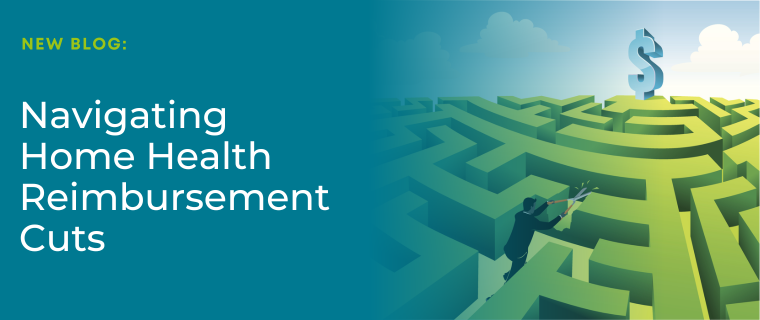Expanding the Toolkit to Include Predictive Analytics - 5 Benefits from a Home Health Physical Therapist’s Perspective
The therapy toolkit is built out over the span of a career to include the most innovative ideas and interventions based on evidence and best practices. Yet, it’s convenient for many clinicians to lean into a “one–size–fits–most” approach to patient care.
Clinical education, experience and instinct are all vital care planning components, but could predictive technology also be leveraged to pave an improved, unique treatment pathway? We think so, and we’ve seen the impact firsthand. By leveraging predictive data, we’ve seen organizations:
- Optimize utilization while simultaneously reducing TIF rates
- Lower hospitalization rates by incorporating stronger patient communication for high-risk patients
- Improve patient care at end-of-life through earlier identification and palliative transition of declining patients
- Proactively identify patients at risk for post-discharge decline and provide additional support via ongoing patient engagement
That’s right—there’s a lot of truth in the data if care teams are willing to collaborate and adopt new support solutions for their clinical-decision making strategies. Here are five things to know about predictive analytics and a case for considering a patient’s unique data when making practice decisions.
1. It’s not magic, it’s math. Predictive analytics is the science of trending historical data to answer a question. If the problem and the solution are known, what was the path from point A to B? In healthcare, historical patterns can predict a patient-specific treatment trajectory with the optimal outcome at the finish line. Simply, we can identify what has worked in the past and reliably apply it to a similar scenario, expecting the same result. It’s not magical or mythical. It’s just an algorithm.
2. Predictive analytics are inherently objective, and we already rely on objectivity to support our clinical decisions. Objective tools exclude bias, personal feelings, and learned behaviors. If Mrs. Jones scores 35 seconds on a Timed Up and Go, we trust this indicator of fall risk and therapy interventions and goals may include fall prevention. Likewise, predictive analytics can be a valuable, objective tool used to our care planning advantage.
3. Prediction drives teamwork, and this benefits the patient. Restoration of function requires multiple players, but we are only naturally comfortable in our “PT bubble.” When leveraging predictive analytics to map the optimal treatment trajectory, interdisciplinary collaboration, versus working in silos, naturally moves to the focus forefront. Each care team member possesses a unique skill set, and predictive analytics encourages intentional coordination resulting in streamlined delivery. Your patient will benefit from these extra planning and collaboration efforts.
4. Optimal care delivery hasn’t always been prioritized. Positive outcomes are expected but efficiency is equally important. Responsible resource utilization must be considered when moving from “one-size-fits-most” to individualization. Predictive analytics provides another layer of insight to focus the practitioner as we develop, execute, or modify a care plan. Each patient should receive just the right amount of care, in the right setting to achieve very specific outcomes.
5. Clinical experience and intuition will always prevail when encountering the “zebra.” Patients are people, and people can be unpredictable despite access to a predictive roadmap. Outliers cannot be forced into an algorithm, and clinical judgement should override when encountering the unexpected. Healing can be an art, and predictive analytics should support your clinical voice, not silence it.
The bottom line is that like any therapy tool, predictive analytics have the potential to help us help our patients. Let’s debunk the myth that merging technology and practice will remove our power to make patient-centered decisions. In actuality, the responsible use of data can empower informed decision-making with the clinician serving as the controller. Therapists – consider adding predictive analytics to your toolkits, and use your clinical expertise to monitor application.
There is truth in the data!
—
View Our Solutions page to learn more on Medalogix’s industry-leading predictive solutions for clinical-decision support and quality patient outcomes.
Related Blogs

Driving an improved home health patient experience with Pulse
The Medalogix suite of products spans a patient’s full home health exper...

CY2025 Hospice Final Rule presents challenges, opportunities for agencies
The CMS 2025 Hospice Final Rule furthers CMS’s multiyear trajectory towa...

Navigating CY 2025 Home Health Reimbursement Cuts: Medalogix Offers Innovative Solutions to Enhance Efficiency and Outcomes
As the Home Health industry grapples with the CY 2025 proposed rule, we ...


